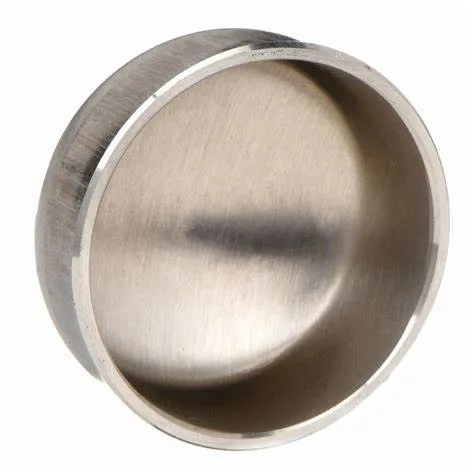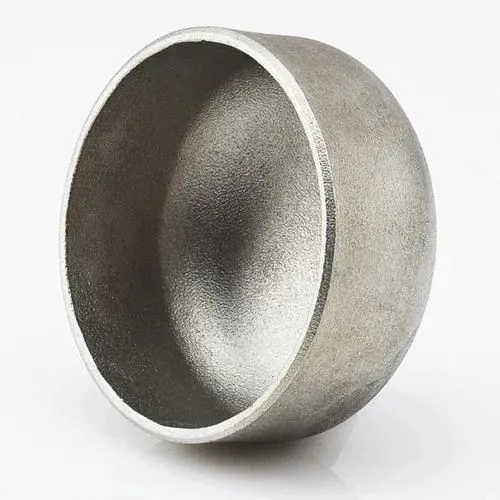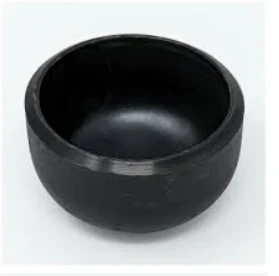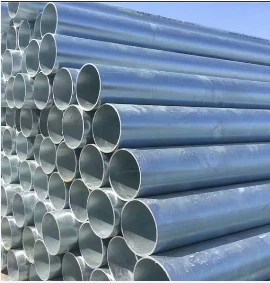JIS B2311 هو معيار صناعي ياباني يغطي تجهيزات أنابيب اللحام التناكبي، بما في ذلك الأغطية المستخدمة في أنظمة الأنابيب. تخدم أغطية اللحام التناكبي غرض إغلاق نهاية الأنبوب، مما يوفر ختمًا لمنع التسرب أو التلوث. فيما يلي مقدمة لأغطية اللحام التناكبي JIS B2311:
- 1. JIS B2311 Standard:
- - يحدد معيار JIS B2311 متطلبات التصميم والأبعاد والمواد والتصنيع واختبار تركيبات اللحام التناكبي، بما في ذلك الأغطية، في أنظمة الأنابيب.
- - يضمن المعيار أن الأغطية المنتجة وفقًا لمعايير JIS تلبي معايير الجودة ومتوافقة مع مكونات الأنابيب الأخرى.
- 2. غطاء اللحام التناكبي:
- - غطاء اللحام التناكبي، وفقًا لـ JIS B2311، عبارة عن تركيب مصمم لتغطية وإغلاق نهاية الأنبوب بشكل آمن، مما يوفر الحماية ويحافظ على سلامة نظام الأنابيب.
- - يتم استخدام الأغطية في الحالات التي تتطلب فيها نهاية الأنبوب الإغلاق، إما بشكل دائم أو مؤقت، لمنع التسرب أو التلوث أو لتوفير لمسة نهائية للنظام.
- 3. المواد والبناء:
- - تتوفر أغطية اللحام التناكبي وفقًا لمواصفات JIS B2311 بمواد مختلفة مثل الفولاذ الكربوني والفولاذ المقاوم للصدأ وسبائك الفولاذ لتلبية متطلبات التطبيقات المختلفة.
- - يتم تصنيع هذه الأغطية باستخدام طرق بناء موحدة لضمان اتصال قوي ومانع للتسرب عند لحامها حتى نهاية الأنبوب.
- 4. التطبيق والفوائد:
- - تجد أغطية اللحام التناكبي تطبيقات في العديد من الصناعات، بما في ذلك النفط والغاز والعمليات الكيميائية ومحطات معالجة المياه والمزيد حيث يلزم تغطية نهايات الأنابيب بشكل آمن.
- - توفر الأغطية الحماية لأطراف الأنابيب من العناصر البيئية، وتمنع التلوث، وتساعد في الحفاظ على نظافة وسلامة نظام الأنابيب.
- 5. التركيب واللحام:
- - تعد ممارسات التثبيت الصحيحة، بما في ذلك المحاذاة الصحيحة وإعداد نهاية الأنبوب وتقنيات اللحام، ضرورية عند تركيب أغطية اللحام التناكبي لضمان إحكام الغلق ومقاوم للتسرب.
- - اللحام هو طريقة شائعة لربط الأغطية بالأنابيب، مما يوفر إغلاقًا آمنًا ودائمًا يمكنه تحمل الضغط وتغيرات درجات الحرارة وتدفق السوائل داخل النظام.
- باختصار، تعد أغطية اللحام التناكبي JIS B2311 من المكونات الأساسية المستخدمة في أنظمة الأنابيب لإغلاق وحماية نهاية الأنابيب بشكل آمن. تتوافق هذه الأغطية مع المتطلبات القياسية لضمان الجودة والموثوقية والتوافق داخل التطبيقات الصناعية حيث يكون إغلاق الأنابيب وحمايتها ضروريًا.
What Is a Butt Welding Cap and How Is It Used in Industrial Piping?
In industrial piping systems, end-of-line sealing and branch closures require robust solutions. A butt welding cap serves as a critical component for terminating pipes securely. By providing a seamless, welded closure, this fitting maintains system integrity, prevents leaks, and supports compliance with industry standards.
What Is a Butt Welding Cap?
A butt welding cap—also called a pipe end cap or buttweld end cap—is a round fitting designed to close off the end of a pipe. It’s manufactured to match the pipe’s outer diameter and schedule, with either a hemispherical or flat face. To install, both the pipe end and cap are beveled to form a V‑groove, enabling full‑penetration, fusion welds. Common materials include carbon steel, stainless steel, nickel alloys, and other engineered grades, chosen to satisfy pressure, temperature, and corrosion‑resistance requirements.
How Is Butt Welding Cap Used in Industrial Piping?
Butt welding caps find application across oil & gas, petrochemical, power generation, water treatment, and general process industries for both permanent and temporary closures. During hydrostatic testing, technicians install caps to seal off sections of piping while monitoring for leaks. In new construction or retrofit projects, caps terminate branch lines, future tie‑in spools, or dead‑end mains until system expansion. Welders prepare each joint by cleaning and beveling surfaces, aligning the cap precisely, and executing a root pass followed by filler passes per the qualified Welding Procedure Specification (WPS). Post‑weld heat treatment and non‑destructive examination (NDE)—such as radiography or ultrasonic testing—verify weld integrity and compliance with ASME B16.9 and related standards. Additionally, temporary caps enable safe isolation during maintenance, allowing for segment testing and dewatering under regulatory protocols.
Benefits and Best Practices
Butt welding caps offer a smooth‑bore transition that minimizes flow disruption and stress concentration. Their full‑penetration welds deliver exceptional structural strength and leak resistance. To optimize performance, engineers should:
Select caps with matching material grades and wall thicknesses
Adhere to proper bevel angles and joint fit‑up tolerances
Follow qualified WPS protocols rigorously
Consider cladding or protective coatings in corrosive environments to extend service life
Regular inspection and thorough documentation ensure long‑term reliability and safe operation under demanding conditions.
Butt welding caps are indispensable components for achieving durable, leak‑proof pipe terminations in a wide range of industrial applications.
Butt Welding Cap FAQs
What is a butt welding cap?
|
What materials are commonly used?
|
What standards govern butt welding caps?
|
How are butt welding caps installed?
|
Where are butt welding caps typically used?
|
What are the advantages of threaded caps?
|
















